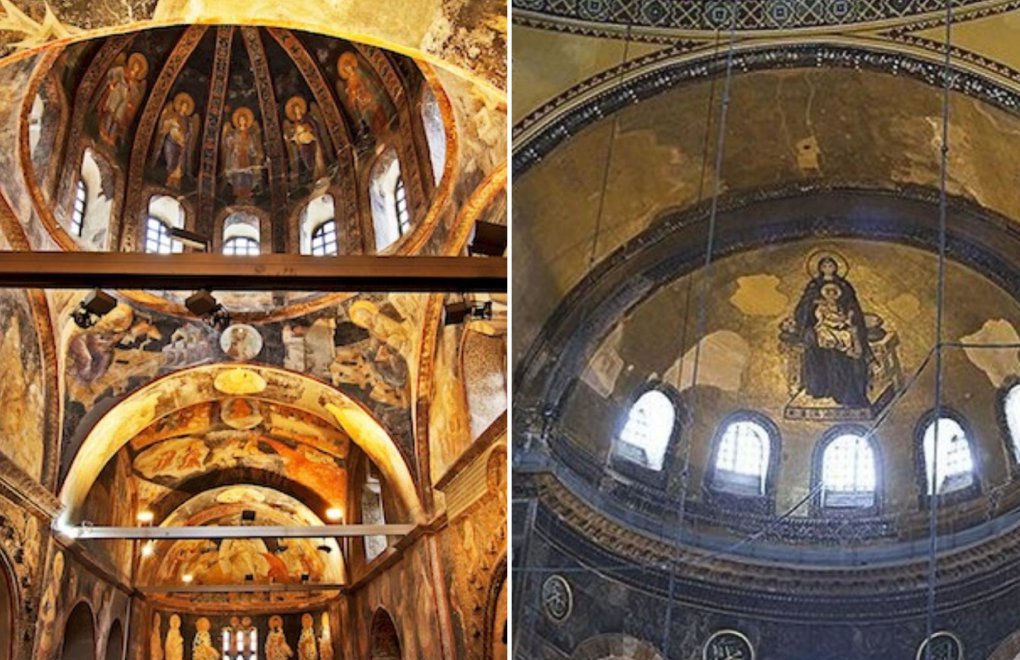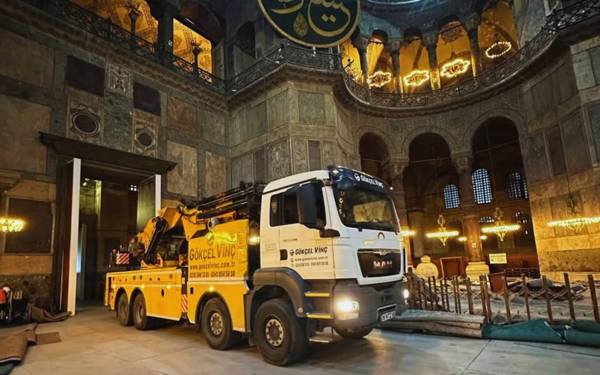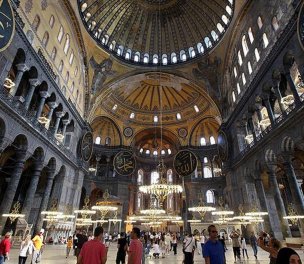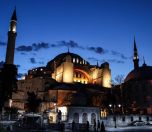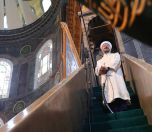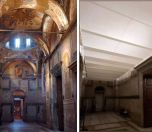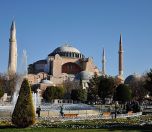Click to read the article in Turkish
UNESCO has applied to Turkey's government to make examinations on Hagia Sophia and Chora, two museums that were converted to mosques in July and August, respectively, Deutsche Welle's Turkish service reported.
Ernesto Ottone, the deputy director-general of the UN's cultural agency, requested the government to allow UNESCO Special Adviser Mounir Bouchenaki to inspect the two structures that are among the World Heritage Sites in Turkey.
CLICK - Erdoğan recites Quran at Hagia Sophia, religious authority head gives sermon with sword
CLICK - Chora Museum opened to worship as mosque
Ottone said that he was concerned about the rumors of changes regarding the Christian elements in the buildings.
Originally built as churches centuries ago, both structures were converted into museums after the foundation of the republic in 1923.
Hagia Sophia's conversion into a mosqueHagia Sophia was built and served as a church for 916 years until the Ottoman Empire took over İstanbul, and a mosque from 1453 to 1934, and most recently as a museum for 86 years. In 1985, during its time as a museum, Hagia Sophia was added to the UNESCO World Heritage List. On July 10, the Council of State annulled a 1934 cabinet decree that had turned Hagia Sophia into a museum, paving the way for its use again as a mosque. The decision received criticism from the European Union and several countries. On the same day, Hagia Sophia was handed over to the Religious Affairs Directorate by a presidential decree. On July 16, the Religious Affairs Directorate signed a cooperation protocol with the Ministry of Culture and Tourism to run Hagia Sophia after its conversion into a mosque. Under the protocol, the ministry will supervise restoration and conservation work, while the Religious Affairs Directorate will oversee religious services. The architectural treasure will also be open to domestic and foreign tourists free of charge. About Hagia Sophia
Hagia Sophia with its innovative architecture, rich history, religious significance and extraordinary characteristics has been fighting against time for centuries, is the largest Eastern Roman Church in İstanbul. Constructed three times in the same location, it is the world's oldest and fastest-completed cathedral. Today's Hagia Sophia is the third building constructed in the same place with a different architectural understanding than its predecessors. By the order of Emperor Justinianos, it was built by Anthemios from Tralles (Aydin) and Isidoros from Miletos (Balat). The construction started in 532 and was completed in five years and opened for worship in 537 with a great ceremony. When Sultan Mehmet the Conqueror captured the city in 1453, he converted it into his imperial mosque. Known for its Imperial Gate, Beautiful Gate (Splendid Door) and Marble Gate, Hagia Sophia has 104 columns, some of which are brought from ancient cities. The "Omphalion" section where the emperors crowned stands out with marble workmanship like these pillars. Hagia Sophia fascinates people by not only with its architectural design, but also by its gold-plated, silver-plated, glass, terracotta and colored stone mosaics, and the original ceiling mosaics of the 6th century with their floral and geometric motifs. The mosaics with figures following the icon ban in the 8th century especially Mother Mary depicted with child Jesus in her arms, the Archangel Gabriel and the Archangel Michael and Deisis stage mosaics must be seen. Sultan Abdulmecid's Mosaic tughra was built between 1847 and 1849 during the restoration by the Fossati brothers. Eight large round plates that were added during the Ottoman period are the work of famous calligrapher Kadıasker Mustafa İzzet during the reign of Sultan Abdülmecid. Two solid marble cubes in the side aisles, which can receive an average of 1250 liters of liquid, were brought from the ancient city of Bergama during the reign of Sultan Murad III. Source: The Ministry of Culture and Tourism |
(SO/VK)




